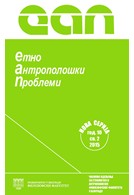Опис и симболика једнорога
у француској књижевности XII и XIII века
The description and symbolic value of the unicorn in
French literature of the 12th and 13th centuries
Author(s): Marija PanićSubject(s): Studies of Literature
Published by: Филозофски факултет, Универзитет у Београду
Keywords: unicorn; allegory; Physiologous; bestiary; animal; didactic literature; French medieval literature
Summary/Abstract: The paper considers naturalist and symbolic traits attributed to the unicorn in French 12th and 13th century literature. The corpus encompasses the bestiaries comprised by Philippe de Thaon, Gervaise, Guillaume de Normandy, Pierre de Beauvais, Richard de Fournival and pseudo-Pierre de Beauveis, which belong to the tradition of the Physiologoi, as well as other encyclopedic and other works which contain the bookish zoological and geographic knowledge of the middle ages: Mappemonde by Pierre de Beauvais, The letter of presbyter John, and the Mappemonde by Gossouin de Metz. In this corpus where the description of the animals comes mainly from the same written sources (from antiquity and late antiquity and the Bible), we consider how this nonexistent animal is described and to what extent a symbolic interpretation is present.
Journal: Етноантрополошки проблеми
- Issue Year: 10/2015
- Issue No: 2
- Page Range: 461-485
- Page Count: 25
- Language: Serbian

